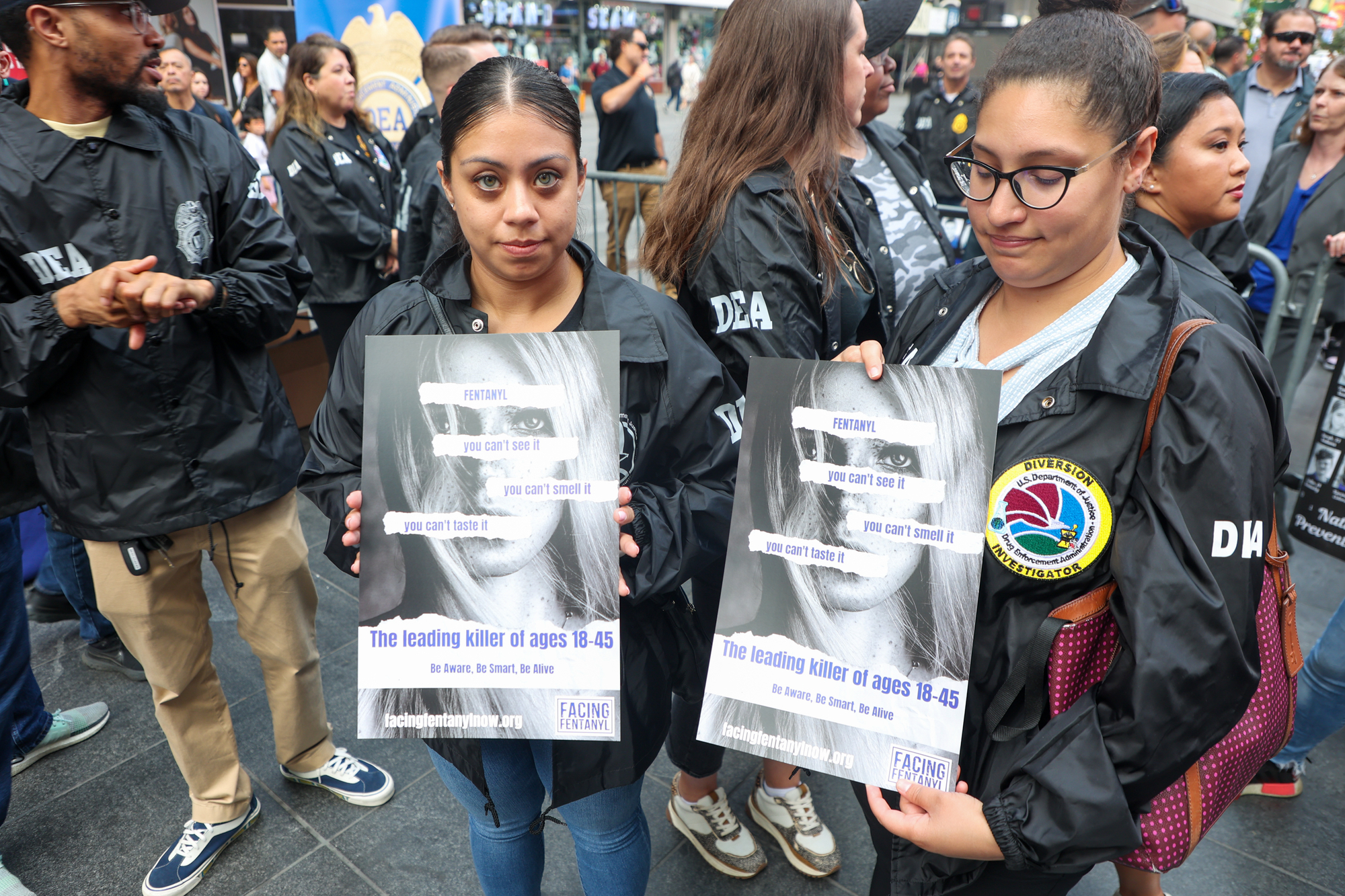
Fentanyl Overdoses and Xylazine Contamination: A Growing Epidemic
With the introduction of fentanyl to the illicit market, the opioid crisis has reached unprecedented levels, with synthetic opioids playing a central role in the staggering increase in opioid-related deaths. Fentanyl, a synthetic opioid up to 100 times more potent than morphine, has flooded illicit drug markets, often mixed with other substances to amplify its effects or disguise its presence. And now xylazine, another additive, is causing a whirlwind of destruction and addiction in its aftermath. Both are highly addictive, and mixed together, it's hard to distinguish the combination from straight fentanyl overdoses.
Fentanyl Overdoses With Xylazine Rising
Tragically, this proliferation of fentanyl has led to a surge in overdose fatalities worldwide. Moreover, the emergence of xylazine, a veterinary sedative, as a contaminant in illicit fentanyl compounds and the drug "tranq dope" has added another layer of complexity and danger to the opioid crisis. People often become addicted to both substances.
Between January 2021–June 2022, xylazine was detected in a high percentage of illegally manufactured fentanyl deaths in 32 jurisdictions deaths, with xylazine often flagged as the cause of death. While fentanyl overdoses are frequently reversible when help is received, xylazine has no legal reversal antidote for humans. (When used in veterinary care, there is an antidote given during overdoses.)
Fentanyl Overdose Deaths Have Still Not Peaked
The statistics surrounding fentanyl-related overdoses are both staggering and sobering. According to the National Institute on Drug Abuse (NIDA), deaths involving synthetic opioids, primarily street fentanyl overdoses, continue to rise, with 70,601 deaths reported in 2021. This upward trend underscores the urgent need for effective interventions to address the fentanyl epidemic and prevent further loss of life.
National Institute on Drug Abuse (NIDA) also reveals that fentanyl overdoses have been rising not only in the United States but also in other countries around the world. This global phenomenon underscores the pervasive nature of the fentanyl crisis and the need for coordinated efforts to combat it on an international scale.
Xylazine is increasingly found when crime labs investigate fatal fentanyl overdoses. Dealers add it as a powder for purposes of using it as a cutting agent in street drugs like heroin and fentanyl. Users can't typically distinguish it by taste or smell and are vulnerable to overdose due to its sedative effects. Overdose-reversal drugs can reverse the opioid part of the overdose, but the xylazine overdose is treated in the hospital as doctors monitor symptoms.
Identifying Signs of Fentanyl/Xylazine Overdose
Reacting quickly to the signs of a fentanyl overdoses is essential, timely intervention, and saving lives. Common symptoms of fentanyl overdose include respiratory depression, pinpoint pupils, confusion or disorientation, unconsciousness, and lips or fingernails turning blue. A person who has overdosed will begin to turn blue because they aren't getting oxygen.
Narcan, a commonly used overdose-reversal drug, is used to reverse the effects of opioid overdose. For fentanyl overdoses, sometimes multiple canisters are needed.
If a person overdoses on both an opioid and xylazine, Narcan won't be enough to reverse the overdose completely. Calling 911 is the next step, and the operator may want to guide you through CPR or ask you to monitor vital signs and stay on the line while waiting for help.
The Threat of Xylazine Contamination
In recent years, reports of xylazine contamination in illicit fentanyl supplies have raised significant concerns among public health officials and law enforcement agencies.
Xylazine, a potent veterinary sedative not intended for human consumption, is a dangerous drug. It becomes more dangerous when mixed with fentanyl, the most powerful opioid meant for humans. Most street fentanyl is 50 to 100 times the strength of morphine, but supply purity varies because it's an illicit market.
In recent years, tranq dope, a drug that purposefully combines xylazine with fentanyl, has become a popular drug. This is primarily due to its potency and price.
Illicit drugs are also tainted with xylazine. A CDC drug surveillance program in Maryland last year found that four out of five fentanyl overdoses also had xylazine traces in various amounts.
These findings underscore the urgent need for comprehensive strategies to address the dual threat of fentanyl and xylazine in the illicit drug market.
Harm Reduction Strategies and Intervention Measures
In response to the escalating fentanyl crisis, harm reduction strategies have become more popular. Some states, such as California, allow the distribution of fentanyl testing strips. These strips can help prevent overdose fatalities. These strips allow people to screen their drugs for the presence of fentanyl before consumption. This helps them make better decisions about if they are going to use the drugs or if they carry Narcan to reverse an overdose. They cannot, however, detect or deter xylazine in drugs.
Additionally, widespread distribution of naloxone kits and training in naloxone administration has proven effective in reducing opioid-related fatalities.
Moreover, evidence-based treatment methods for opioid use disorder, such as medication-assisted treatment (MAT) and behavioral therapy, offer hope for individuals struggling with addiction. Research has repeatedly proven the effectiveness of MAT alongside therapy in reducing opioid cravings, preventing relapse, and improving long-term outcomes for patients with opioid use disorder.
Seeking Solutions in the Face of Crisis
The fentanyl epidemic and the introduction of xylazine into the opioid supply represent a formidable public health challenge. How this is handled has far-reaching consequences for individuals, families, and communities worldwide. Fentanyl overdoses are hard enough to reverse without the added strain of xylazine.
The proliferation of fentanyl overdoses, coupled with the emergence of xylazine contamination, underscores the urgent need for comprehensive strategies. Communities must form partnerships to address the root causes of opioid misuse and prevent overdose fatalities.
In the face of this crisis, healthcare providers must remain vigilant, compassionate, and committed to finding solutions that prioritize the well-being of all individuals affected by opioid addiction. Workers, together with communities, can help change the tide of the fentanyl epidemic. A future is possible where every person has the opportunity to live a life free from the grip of addiction.
Getting Help for Opioid Addiction
At Solas Health, we know that overcoming opioid addiction can be a challenge, but you don't have to do it alone. Our experienced team treats fentanyl addiction and provides personalized support every step of the way.
We'll work with you to create a treatment plan that fits your needs and goals, ensuring you feel heard and supported throughout your journey to sobriety.
Medication-Assistant treatment eases cravings, while therapy helps you understand why you use opioids and teaches you new ways to cope. We're ready to support your journey to a brighter, drug-free future. Get in touch to learn more about our programs.
If you are in need of help, please call us at: 910-295-7246 or message us.
Categories
fentanyl News opioids
